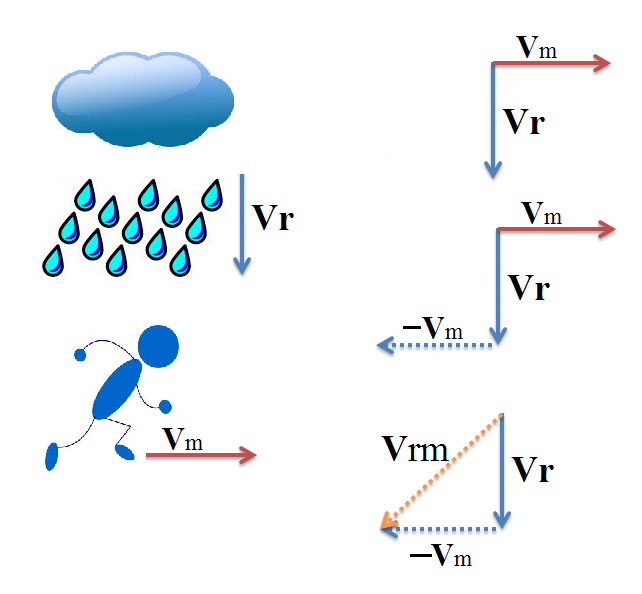Question #3f1d8
2 Answers
If a man is standing by the track and train is running at
Explanation:
If he is also running at
If he run to north at
Hope this explains the relative velocity.
Concept.
For rain problem,
If
Explanation:
Following the above logic

See the vector representation on the right side of the figure above.
- Velocity vectors
#vecV_m and vec V_r# are drawn. - Recall
#-ve# sign in front of the the second term.
Therefore, draw#-vecV_m# at the tip of#vecV_r# - Join the tail of
#vecV_r# to the tip of#-vecV_m# to obtain#vecV_(rm)# as velocity of rain with respect to man.
Similar steps need to be followed if
- Velocity vectors
#vecV_m and vec V_r# are drawn. - We are to find out
#vecV_(mr)# , velocity of man with respect to rain.
We know that#vecV_(mr)=vecV_m-vecV_r#
Therefore draw#-vecV_r# at the tip of#vecV_m# - Join the tail of
#vecV_m# to the tip of#-vecV_r# to obtain#vecV_(mr)# as velocity of man with respect to rain.


